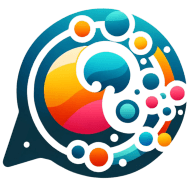6 Customer Service Metrics that Drive Team Performance and Behavior Change
In the world of customer service, metrics play a crucial role in driving team performance and fostering positive behavior change. This article delves into key customer service metrics that can significantly impact your organization's success. Drawing from insights provided by industry experts, we explore strategies to enhance customer satisfaction, improve team efficiency, and boost overall business outcomes.
- Minimize Callbacks to Improve Quality
- Prioritize Fast Response Time in Crisis
- Reduce Customer Effort for Better Loyalty
- Focus on Retention for Student Success
- Solve Problems on First Contact
- Measure Post-Sale Peace of Mind
Minimize Callbacks to Improve Quality
I don't track a "customer service metric." My business is a trade, and the most valuable thing I track is a simple one: the number of times a client has to call us back for a mistake. A callback is a direct sign that something went wrong with the work, and my business is built on a simple promise: that we won't have any.
I have a simple spreadsheet where I track every single callback we get. It's a low-tech system, but it's the most valuable thing I have. I'll go to the job and fix the mistake myself. I'll talk to my crew about what went wrong and how we can prevent it from happening again. This isn't just about fixing a mistake. It's about teaching my crew how to be better professionals.
This has a huge impact on my team's behavior. They know that a callback is a direct reflection of their work, and they don't want to let me down. They are more invested in the quality of the work, and they're more focused on being professionals who don't have to be called back. The number of callbacks we get has gone down to almost zero, and our positive reviews have gone way up.
My advice to other business owners is to stop looking for a complicated "metric" to track. The best way to measure a team's performance is to just look at the work. The best "metric" is a happy customer who doesn't have to call you back. When you do that, the rest will fall into place.
Prioritize Fast Response Time in Crisis
In my world, "customer service" is a bit different. It's not about a product. It's about a person in crisis reaching out for a lifeline. When a person makes that first phone call, they're in a moment of extreme vulnerability. For us, the most important metric isn't a score on a survey; it's response time.
I realized that a fast response time is a direct reflection of empathy and commitment. A person in crisis might only make that one phone call before they lose the courage to try again. If we miss it, we miss the opportunity to help them. I had to make my team understand that a ringing phone isn't just a business call; it's a cry for help.
Focusing on that one metric completely changed our team's behavior. We went from being reactive to being proactive. It instilled a sense of urgency and purpose in everyone, from the front desk to the clinical staff. The whole team now sees a quick, empathetic response as a core part of their mission to save lives.
My advice is simple: the most valuable metric you can track is the one that forces you to be more human. It's a simple way to make sure your business stays true to its purpose and that you never forget the people you are fighting for.
Reduce Customer Effort for Better Loyalty
The single customer service metric I find most valuable is customer effort score (CES) — essentially, how easy it was for a client to get their issue resolved. While satisfaction and NPS are useful, effort tells you more directly whether the experience built loyalty or frustration.
When I started tracking CES, it immediately highlighted small friction points we hadn't considered significant — like delayed follow-ups or unclear next steps in communication. Even if the outcome was positive, if clients felt the process was difficult, their perception of service suffered.
Focusing on this metric changed my team's behavior. Instead of just aiming to "solve problems," they began asking, "How can we make this simpler for the client?" That shift led to streamlining processes, improving response times, and being proactive with updates. The result was stronger retention and more referrals, because clients valued ease as much as outcomes.
Focus on Retention for Student Success
Customer retention rate. It ties directly to learning outcomes and revenue, and it prevents "ticket-close theater." Focusing on retention shifted us from fast replies to complete resolutions, proactive outreach to inactive learners, and tighter handoffs between support and academics. Year over year, retention rose about 15% and refund requests fell. One number aligned everyone on what matters: ongoing student success.

Solve Problems on First Contact
Many people believe that the most valuable customer service metrics are "response time" or "call volume." However, in my experience, these metrics can be misleading. They may make you feel like you're performing well, but they don't indicate whether the customer's problem was actually resolved.
The single customer service metric I find most valuable to track is "First-Contact Resolution Rate." This metric represents the percentage of customer issues that are resolved on the first attempt, without any need for follow-up. It's a powerful metric because it compels my team to be knowledgeable, efficient, and empathetic.
From an operational perspective, a high first-contact resolution rate indicates that my team is more efficient. We're not wasting time on back-and-forth emails. We're solving problems and moving on. From a marketing standpoint, it's a significant competitive advantage. It demonstrates to our customers that we are a company capable of solving their problems on the first try.
Focusing on this metric has fundamentally changed my team's behavior. We transitioned from being a team that merely answered questions to one that solved problems. The focus shifted from speed to quality. My team is now more invested in the customer's success because they understand that their job is to solve the problem, not just to answer a call. We evolved from a team that was merely reacting to problems to one that was proactively solving them.
My advice is to stop focusing on the easy metrics and start examining the challenging ones. The most valuable metrics are those that force you to become a better company. When you concentrate on solving problems on the first attempt, you build a foundation of trust that serves as a substantial competitive advantage.

Measure Post-Sale Peace of Mind
The single most valuable customer service metric I track is our "post-sale peace of mind" rating, as it directly correlates with customer satisfaction and business growth through referrals. By implementing this measurement, we've transformed our team's approach to focus on providing customers with clear, upfront timelines for every step of their journey with us. This shift in behavior has resulted in significantly higher peace of mind ratings from our customers and a notable increase in direct referrals. The metric has proven invaluable because it aligns our team's priorities with what truly matters to customers after they've made a purchase decision.





